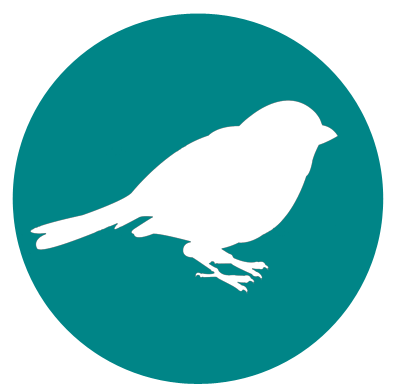Birding at Dillon State Park and Reservoir
Nashport, OhioGeneral Information
Address
5265 Dillon Hills Drive; Nashport, OH 43830
County/Counties
Muskingum
DeLorme Page Number and Coordinates
(7th Edition and earlier) Page 60, D-1.5
Nearest Town or City
About 8 miles northwest of Zanesville and about 8 miles East of Newark, Ohio.
Directions from Nearest Town or City
Main Park Entrance (beach area): From Zanesville, take SR 146 west about 7.5 miles to Clay Littick Drive (County Road 708). Turn left and go about .7 mile. Bear left, and watch for signs on the right.
From Newark, take SR 16 east about 8 miles. Exit onto SR 146 eastbound, about 8 miles. Turn right onto Clay Littick Drive (County Road 708). After about .7 mile, bear left and watch for signs on the right.
The Sportsman Club area: From Zanesville, continue on about 5.5 miles beyond the turn-off for the main entrance to Dillon State Park on SR 146 (past the town of Nashport) to Pleasant Valley Road. Turn left (There are signs at this turn. Go about 5 miles and turn left into the Sportsman’s area. Pass the drive to the clubhouse, and continue on toward the boat ramp for the best birding.
About Dillon State Park and Reservoir
There is a great variety of habitats within the park. The reservoir was constructed in 1961, and at that time many of the farm fields were allowed to grow into shrubby woodlands. There are still some grassy areas. On the hillsides, there are mature mixed hardwood forests. The reservoir itself is very shallow at the western end, due to silt build-up. Deeper water occurs nearer the dam. Trails include the Ruffed Grouse Nature Trail, approximately 3/4-mile long, which is a branch of the 6-mile long Licking Bend Trail and skirts the lakeshore. Three other trails, Blackberry Ridge Trail (1 mile), King Ridge Loop (1.1 miles) and Hickory Grove Loop (1.5 miles), are located very near the camping and cottage area. At the beach area parking lot, behind the tennis courts, is a short, paved trail giving an excellent view from above the reservoir and mudflats. This trail is the best to take in winter, as most of the others are not passable, and it affords a good look at a variety of waterfowl. From late July to October, use this trail to access the mudflats. In recent years, the mudflats have given way to shrubby growth, but sometimes there are still excellent shorebirds found in the area. In spring, watch for migrating waterfowl, and don’t be surprised to see a Sandhill Crane.
This is a Corps of Engineers lake originally constructed for flood control, so the water levels are artificially managed, which also tends to make shorebird habitat unreliable.
Visiting Information
Closed hours/season
The park is open daily from dawn to dusk, although not all facilities are open year-around.
Parking Areas
There is a large parking area near the beach house and tennis courts. There are also paved lots at picnic areas A (where the Ruffed Grouse Trail begins) and C.
Fees/Permits
None required for birding.
Restroom Facilities
There are pit toilets near most of the boat ramps, although the one formerly near the Nashport boat ramp was removed last year since that ramp is no longer functional.
Harmful Insects, Poisonous Plants, or Animals
Poison ivy is common. Avoid any raccoon in daytime, as rabies is always a possibility. Copperhead snakes are possible along any of the unpaved trails. Use insect repellent or protective clothing for mosquitoes in spring and summer.
Restaurants in the Area
There is a convenience store at the Exxon station on SR 146, near the turn onto Clay Littick Road, where sandwiches, drinks, and snacks can be purchased. In summer, there is a commissary at the camp store, near the camping area. The nearest fast food and sit-down restaurants are in Zanesville.
Other Useful Information
Fishermen use this area extensively. Sometimes there are fishing hooks and lines along the shore, along with other litter. Canoes and kayaks can be rented in the area, and this may be the ideal way to access the best shorebird habitat. Canoes can be launched above Black Hand Gorge, and follow the Licking River through the gorge and into the Dillon reservoir.
Other Birding Spots in the Area
Black Hand Gorge State Nature Preserve, Muskingum River State Park, The Wilds, Salt Fork State Park.
Birds of Interest by Season

Winter
A good time of the year for Bald eagles, waterfowl, Northern Harriers, and gulls (year-around). Also, most woodland birds can be found here, including Pileated Woodpecker. In the past, Snow Buntings have also been reported.
Spring
A good time of the year for Bald eagles, waterfowl, Northern Harriers, and gulls (year-around). Also, most woodland birds can be found here, including Pileated Woodpecker. In the past, Snow Buntings have also been reported.
Summer
Yellow Warblers, Common Yellowthroats, and Yellow-breasted Chats regularly nest in the area near the reservoir, along DNR Road #7. This road follows the north side of the reservoir from Dillon Hills Drive, past the Nashport boat ramp (no longer used) to SR 146. Near the Nashport boat ramp, look for Green Herons and Wood Ducks. Sora can sometimes be found, as well as Great Egrets and the ubiquitous Great Blue Herons. The habitat here may also be good for rails. Look also for Yellow-billed Cuckoos. Near the Sportsman’s area, look for Blue-winged and Yellow Warblers. There is a lot of good sparrow habitat throughout the park. Along the Ruffed Grouse Trail, look for Scarlet Tanagers and Baltimore Orioles. Cerulean Warbler has also been reported in this area. By late summer, begin looking for shorebirds on the mudflats near the beach area. These areas can sometimes be viewed from DNR Road #7, but often the best view is obtained by taking the paved trail, from behind the tennis courts and beside the beach-area parking lot. Just a few feet off the trail, especially along the horse trail, there are some excellent overlooks of the mudflats. Sometimes shorebirds can also be spotted from the boat ramp on the Sportsman’s Club road. A scope is recommended. There is also a muddy peninsula used by fishermen, which is accessed from DNR #7, just northwest of and across from the horsemen’s area. Shorebirds can sometimes be seen from this peninsula with a scope.
Fall
Most common migrants make their way through Dillon. Continue watching the areas described above for shorebirds and waterfowl. This is a duck-hunting area, so the numbers of fall waterfowl are affected by the hunting season.

